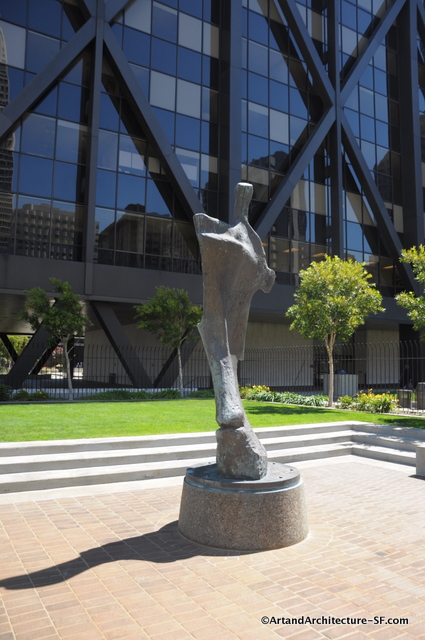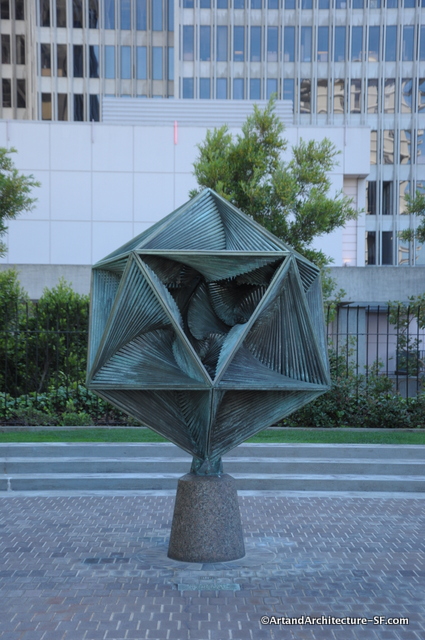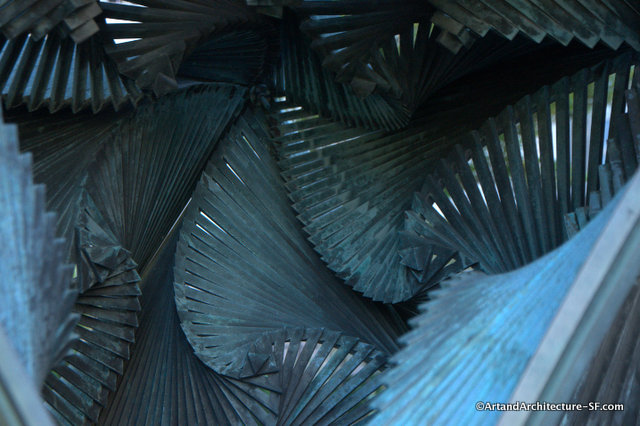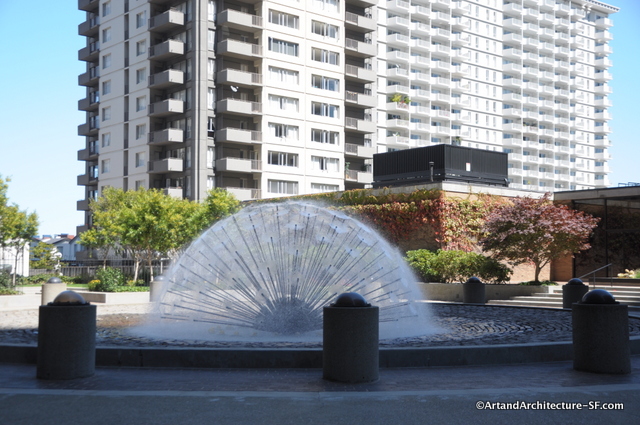1 Maritime Plaza
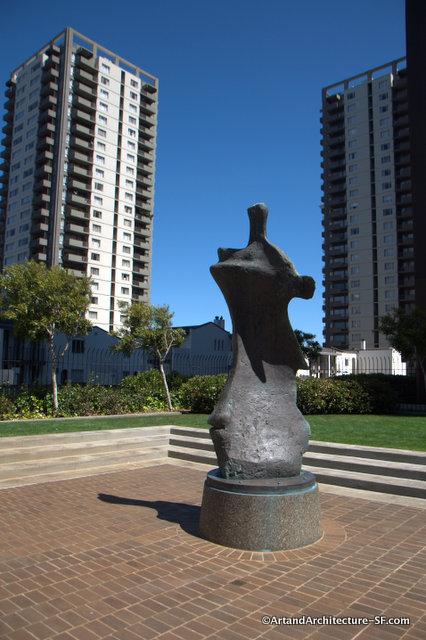 Standing Figure Knife Edged by Henry Moore – 9161
Standing Figure Knife Edged by Henry Moore – 9161
This is an enlarged bone with the addition of a small head. Moore had always been fascinated by bones.
“Since my student days I have liked the shape of bones, and have drawn them, studied them in the Natural History Museum, found them on sea-shores and saved them out of the stewpot. There are many structural, and sculptural principles to be learnt from bones, e.g. that in spite of their lightness they have great strength. Some bones, such as the breast bones of birds, have the lightweight fineness of a knife-blade. Finding such a bone led to me using this knife-edge thinness in 1961 in a sculpture Seated Woman (thin neck). In this figure the thin neck and head, by contrast with the width and bulk of the body, give more monumentality to the work. Later in 1961 I used this knife-edged thinness throughout a whole figure, and produced this Standing Figure.”
Henry Moore quoted in Phillip James, Henry Moore on Sculpture; a collection of the sculptor’s writings and spoken words, Macdonald. London 1966, p.278
Henry Moore (1898 – 1986) is perhaps the most influential public sculptor of this century. Drawing on his studies of Classical, pre-Columbian and African art, Moore created original and truly modern sculptural forms. Abstractions of organic shapes were his primary motif. His seated, standing, and reclining figures comprise an enduring vocabulary reflecting the universality of the human condition.
“The observation of nature is part of an artist’s life, it enlarges his form [and] knowledge, keeps him fresh and from working only by formula, and feeds inspiration.” ~ Henry Moore
“In my opinion, everything, every shape, every bit of natural form, animals, people, pebbles, shells, anything you like are all things that can help you to make a sculpture.” ~ Henry Moore as quoted in Five British Sculptors (Work and Talk) by Warren Forma, 1964.
San Francisco is fortunate enough to have four Henry Moores, the other accessible one sits in front of Davies Symphony Hall. This piece is owned by the Golden Gateway Center Collection of Fine Art.
